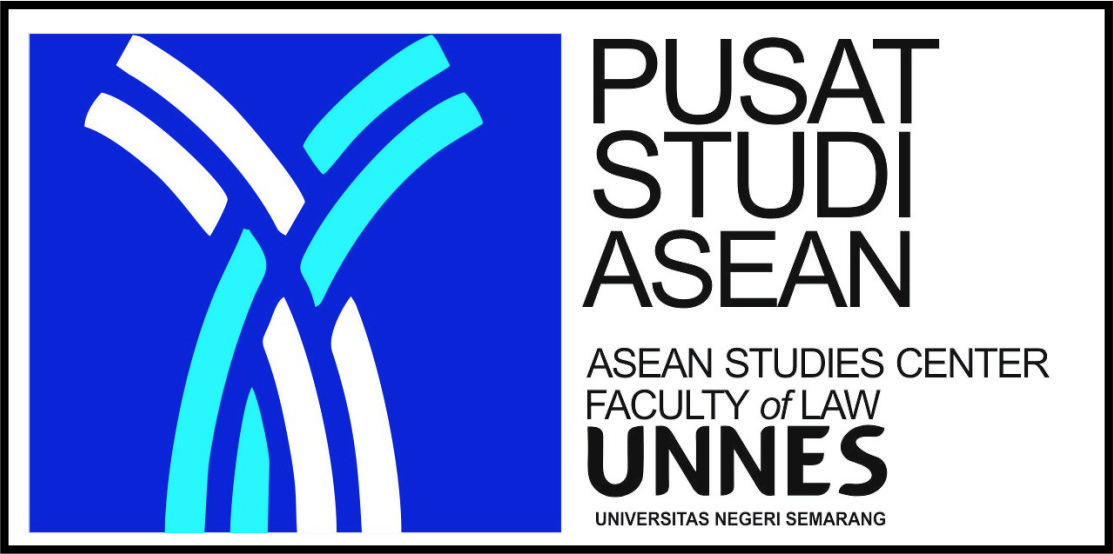Disbanding Prostitution Localization is Violating Female Sex Workers’ Rights: A Case of Indonesia
Abstract
Many see prostitution as controversial, as it has few, if not many things to do with morality and public safety. For Indonesia in particular, such practice is also contradictory with the religious teachings upheld by the society. Realizing that the majority of people stand against prostitution practice, government authorities are competing to entirely wipe out prostitution by disbanding prostitution localizations. Total of 160 prostitution localizations had been disbanded in the span of 2016-2019. However, such attempt did not evaluate safety concerns for therein female sex workers (FSW). Prostitution will flourish, localized or not. Thus, FSW were relocating to scattered areas (increasing safety risk) or soliciting online (violating more laws). The disappearance of monitored zones for sex business will address new problems, resulted from negative effects of uncontrolled prostitution. This research is a preliminary analysis in criticizing the Indonesian government policy for disbanding prostitution localizations. Indonesia’s government promoted eradication of prostitution to conform with norms while in national level, prostitution is not entirely illegal. Sex work is not a crime and in the history, regional governments had been accommodating area for prostitution. That, in a way, provided safety for FSW from criminalization. However, a full recognition, let alone legalization, of prostitution is still far from achieved. The authors concluded that the recent prostitution localizations dissolution is a hostile attempt to eliminate the rights of FSW as women, including rights for welfare and a safe work environment. Thus, strict control for prostitution through localizations for sex work is actually the answer for a safe, monitored prostitution industry and should have not been disbanded.
Keywords
Full Text:
PDFReferences
Books
Aziz, Zarizana A. & Moussa, Janine. Due Diligence Framework. State Accountability
Framework for Eliminating Violence against Women. Due Diligence Projec- International Human Rights Initiative, 2016.
Kempadoo, Kamala and Jo Doezema. Global Sex Workers: Rights, Resistance, and
Redefinition. New York: Routledge Publisher, 1998.
Smith, Molly and Juno Mac, Revolting Prostitutes: The Fight for Sex Workers' Rights
London, Brooklyn: Verso, 2018.
Journals
Deshpande, N. A., and Nour, N. M. “Sex Trafficking of Women and Girls.”
Reviews in Obstetrics and Gynecology 6, No. 1 (2013 ): e22-e27. https://www.ncbi.nlm.nih.gov/pmc/articles/PMC3651545/#
Garfield, E. “The Anomie-Deviant Behavior Connection: The Theories of
Durkheim, Merton, and Srole.” Essays of an Information Scientist 10, no. 39 (1987 ): 272-281. http://www.garfield.library.upenn.edu/essays/v10p272y1987.pdf
Harjianti, M. A. and Navastara, A. M., “Kajian Persepsi Masyarakat Dalam
Pengembangan Kawasan Eks Lokalisasi Dolly Surabaya.”, Jurnal Teknik ITS 9, no. 2 (2021): C196-C201 https://ejurnal.its.ac.id/index.php/teknik/article/viewFile/56131/6329
Hughes, Donna M. “Prostitution Online”, Journal of Trauma Practice (The Haworth
Maltreatment & Trauma Press, an imprint of The Haworth Press 2, No. 3/4 (2003): 115-131 https://works.bepress.com/donna_hughes/7/
Lee, S. and Persson, P., “Human Trafficking and Regulating Prostitution.”, IFN
Working Paper No. 996, NYU Stern School of Business EC-12-07, NYU Law and Economics Research Paper, no. 12-08 (2021). https://ssrn.com/abstract=2057299 or http://dx.doi.org/10.2139/ssrn.2057299
Mattson, G. “The Modern Career of ‘the Oldest Profession’ and the Social
Embeddedness of Metaphors,” American Journal of Cultural Sociology 3, no. 2. (2015 ): 191-223. https://doi.org/10.1057/ajcs.2015.4
Mahapatra, N., Faulkner, M., and Schatz, Mona C.S.,“Forefront of Human
Rights Issues: Integrating Human Trafficking into the Social Work Curriculum,” Critical Social Work- An Interdisciplinary Journal Dedicated to Social Justice 17, no. 1 (2016 ): 76. https://doi.org/10.22329/csw.v17i1.5896
Munawaroh, S. “Pekerja Seks Komersial (PSK) di Wilayah Prambanan, Kabupaten
Klaten, Jawa Tengah,” Dimensia Jurnal Kajian Sosiologi 4, no. 2 (2010): 69-82. https://doi.org/10.21831/dimensia.v4i2.3433
Nelson, K. E. “Sex Trafficking and Forced Prostitution: Comprehensive New
Legal Approaches,” Houston Journal of International Law 24, No. 3 (2002 ): 551-578. https://library.law.utoronto.ca/whrrarticle/sex-trafficking-and-forced-prostitution-comprehensive-new-legal-approaches
Ocktaviar, R. S., Sambas, N., Andriasari, D. “Telaah Kritis terhadap
Putusan Nomor 470/Pid.Sus/2014/Pn.Smn tentang Perkara Prostitusi Online Ditinjau dari Perspektif Kriminologi,” Prosiding Ilmu Hukum- Seminar Penelitian Sivitas Akademika Unisba (SPeSIA) 4, no. 1 (2018): 35-40. http://dx.doi.org/10.29313/.v0i0.8824
Orchard, T., “Sex Work and Prostitution.” Encyclopedia of Sexuality and Gender.
Springer. (2020): 1-5 https://doi.org/10.1007/978-3-319-59531-3_15-1
Ridwan, T.R., Andi, L., and Adam, A., “The Social Construction of the
Commercial Sex Workers in Makassar City,” Mediterranean Journal of Social Sciences 7, no. 3, 2016): 215-221. https://doi.org/10.5901/mjss.2016.v7n3s1p215
Rostamzadeh, E., Rahim, R. A., and Mohseni, F. “Historical
Background of Prostitution and Typology: A Social-Legal Perspective,” Mediterranean Journal of Social Sciences 7, no. 5 (2016): 232-240. https://doi.org/10.5901/mjss.2016.v7n5p232
Sevrina, G. I. “Kebijakan Kriminalisasi Terhadap Praktik Prostitusi di Indonesia.”,
Law and Justice 5, no. 1 (2020): 17-29 DOI: 10.23917/laj.v5i1.9216
Surbakti, K. and Yudi, P., “Pemanfaatan Lokalisasi Prostitusi untuk Pendapatan Asli
Daerah (PAD).”, Curere- Jurnal Ilmiah Fakultas KIP Universitas Quality 3, no. 2 (2019): 67-75 DOI: http://dx.doi.org/10.36764/jc.v3i2.251
Weitzer, R., “Sociology of Sex Work”, Annual Review of Sociology 35, (2009): 213-234.
http://dx.doi.org/10.1146/annurev-soc-070308-120025
Weitzer, R., “Legal Prostitution: The German and Dutch Models.” Dual Markets.
Springer, Cham. (2017). https://doi.org/10.1007/978-3-319-65361-7_24
Williamson, Celia and Cluse-Tolar, Terry. “Pimp-Controlled Prostitution: Still an
Integral Part of Street Life”, Violence Against Women 8, no. 9 (2002): 1074. https://doi.org/10.1177/107780102401101746
Internet:
Banakar, R. (October 2, 2019). On Socio-Legal Design. Retrieved from
https://ssrn.com/abstract=3463028 or http://dx.doi.org/10.2139/ssrn.3463028
Carina, J. (October 31, 2017). Kisah Anies dan Alexis, Ahok dan Kalijodo. Retrieved from https://megapolitan.kompas.com/read/2017/10/31/12305911/kisah-anies-dan-alexis-ahok-dan-kalijodo?page=all
Darmadi, S. (November 25, 2014). Sobek sertifikat pelatihan, PSK di Malang tuntut kompensasi. Retrieved from https://www.merdeka.com/peristiwa/sobek-sertifikat-pelatihan-psk-di-malang-tuntut-kompensasi.html
Fadillah, R. (June 12, 2017). Kalijodo, Legenda Prostitusi yang Belum Mati. Retrieved from
https://www.merdeka.com/khas/kalijodo-legenda-prostitusi-yang-belum-mati.html
Friana, H. (June 7, 2017). Langkah Penertiban Prostitusi Kalijodo Dinilai Kurang Tepat.
Retrieved from https://tirto.id/langkah-penertiban-prostitusi-kalijodo-dinilai-kurang-tepat-cqfQ
Irfani, F. (May 19, 2020). Coronavirus Killed the Sex Industry. Now Indonesian Sex Workers
are Coming Together to Survive the Pandemic. Retrieved from https://www.vice.com/en_asia/article/93554e/indonesia-jakarta-sex-worker-organisation-coronavirus-pandemic
Kurniawan, D. (April 13, 2014). Fenomena Bisnis Prostitusi di Jalanan Surabaya.
Retrieved from https://www.liputan6.com/news/read/2036314/fenomena-bisnis-prostitusi-di-jalanan-surabaya
Kurniawan, H. (June 18, 2014) Perlawanan PSK Dolly Menolak Penutupan Lokalisasi.
https://daerah.sindonews.com/berita/874648/23/perlawanan-psk-dolly-menolak-penutupan-lokalisasi accessed on 4 May 2023
Mallick, S. Introduction to Sociology. The Sociology of Anomie: Conformity and Deviance.
Retrieved from https://nptel.ac.in/courses/109103023/download/lecture%206.pdf .
Pemkab Kediri Tidak Tutup Lokalisasi Prostitusi. (January 30, 2015). Retrieved from
https://www.adakitanews.com/pemkab-kediri-tidak-tutup-lokalisasi-prostitusi/
Pratama, A.N. (January 9, 2019). Mengenal 9 Praktik Prostitusi dalam Sejarah Peradaban
di Dunia. Retrieved from https://internasional.kompas.com/read/2019/01/09/06010041/mengenal-9-praktik-prostitusi-dalam-sejarah-perabadan-di-dunia-?page=all
Plasmanto, G. (August 11, 2015). Dinsos: 100 mantan PSK belum peroleh kompensasi.”
Retrieved from https://jambi.antaranews.com/berita/307860/dinsos-100-mantan-psk-belum-peroleh-kompensasi
ProCon.org. (April 23, 2018). Countries and Their Prostitution Policies. Retrieved from
https://prostitution.procon.org/countries-and-their-prostitution-policies/
Syah, M. H. (February 21, 2016). Cerita Lokalisasi Kramat Tunggak Ditutup Saat Puncak
Kejayaannya. Retrieved from https://www.liputan6.com/news/read/2441786/cerita-lokalisasi-kramat-tunggak-ditutup-saat-puncak-kejayaannya
Velarosdela, R. N. (June 22, 2021). Lokalisasi Kramat Tunggak: Dibuat Ali Sadikin,
Diruntuhkan Sutiyoso. Retrieved from https://megapolitan.kompas.com/read/2021/06/22/11462021/lokalisasi-kramat-tunggak-dibuat-ali-sadikin-diruntuhkan-sutiyoso?page=all.
Yani, M. (April 27, 2022). Ali Sadikin, Dijuluki Gubernur Maksiat Karena Kramat Tunggak.
Retrieved from https://merahputih.com/post/read/ali-sadikin-dijuluki-gubernur-maksiat-karena-kramat-tunggak
Regulations
Indonesia. Indonesian Criminal Code, Staatsblad 1915 No. 732.
Indonesia. Regional Regulations regarding Public Order, Jakarta Regional Regulation
No. 8 Year 2007, Lembaran derah provinsi daerah khusus ibukota Jakarta tahun 2007 Nomor 8.
United Nations. Convention for the Suppression of the Traffic in Persons and of the
Exploitation of the Prostitution of Others. New York: United Nations Publication, 1951.
References in the form of microforms, audiovisual format and the like:
Muhammad Mustofa, quoted from his speech on “Pelacuran dalam Sudut Pandang
Kriminologi”, presented in the National Seminar of Tindak Pidana Prostitusi dan Permasalahan dalam Penegakkan Hukumnya, Universitas Trisakti, Jakarta, 1 Agustus 2019.
Refbacks
- There are currently no refbacks.











